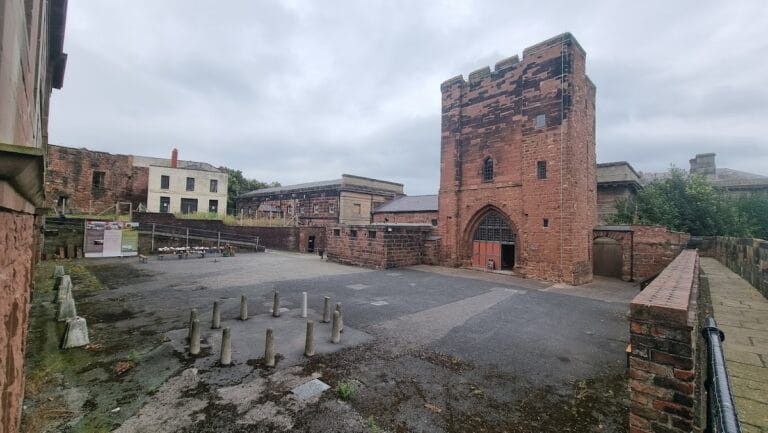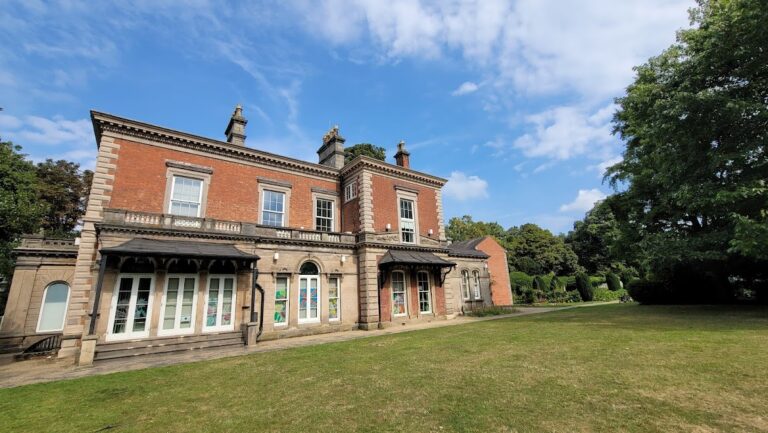Beeston Castle: A Historic 13th-Century Fortress in England
Visitor Information
Google Rating: 4.5
Popularity: Medium
Google Maps: View on Google Maps
Official Website: www.english-heritage.org.uk
Country: United Kingdom
Civilization: Medieval European
Remains: Military
History
Beeston Castle, located near Tarporley in England, was established in the 13th century by the Anglo-Norman lord Ranulf de Blondeville, the 6th Earl of Chester. Constructed in the 1220s, this stronghold took advantage of an earlier site known for prehistoric and Iron Age fortifications, built atop a natural sandstone crag to maximize its defensive strength.
Following the death of Ranulf’s heir John in 1237, the castle came under the possession of King Henry III. During this period, the king expanded the fortress amidst ongoing conflicts with the Welsh, employing the castle as a prison for Welsh captives. In 1254, ownership passed to Henry III’s son, Prince Edward, who held the title Earl of Chester. Edward, who later became King Edward I, used Beeston Castle during his campaigns, notably completing the conquest of Wales.
Through the 14th century, Beeston Castle continued to see upkeep and enhancements, but by the 16th century it was viewed as outdated for military purposes. Consequently, in 1602, the castle was sold to Sir Hugh Beeston of Beeston Hall. During the English Civil War in the mid-17th century, the castle changed hands several times; seized by Parliamentary forces in 1643, briefly taken by Royalist troops, and finally subjected to a siege until it surrendered in 1645. In 1646, Oliver Cromwell ordered the partial destruction of the fortress to prevent its future use in warfare.
The 18th century brought changes of a different nature, with parts of the castle grounds quarried for stone. This activity led to the demolition of the castle’s gatehouse to allow the removal of quarried materials. In 1840, the site was purchased by John Tollemache, 1st Baron Tollemache, who revitalized its grounds by hosting annual charitable events that attracted large crowds.
Among its many historical associations, Beeston Castle has been linked to legends suggesting that the royal treasure of King Richard II lies buried within its grounds, particularly near the deep well. Despite numerous searches, no evidence supporting this claim has been found. Today, the castle is protected as a Scheduled Ancient Monument, with its ruins and related structures recognized as Grade I listed buildings.
Remains
Beeston Castle is perched atop Beeston Crag, a sandstone hill rising roughly 350 feet above the surrounding Cheshire Plain. The stronghold’s design divides into two main sections: the inner bailey located on the summit and the outer bailey situated on the lower slopes of the hill. The arrangement expertly uses the natural steep drops on three sides of the summit, while the fourth side is defended by a massive rock-cut ditch nearly 30 feet deep, emphasizing the site’s strategic placement.
The outer bailey, roughly rectangular in shape, is enclosed by sandstone-faced walls approximately six feet thick, constructed with a rubble infill core. These fortifications include several distinctive D-shaped towers, an architectural innovation at the time. The towers’ curved fronts allowed defenders to fire along the curtain walls and directly ahead, while the open backs prevented enemies from sheltering if the towers were breached. This thoughtful defensive design reflects the castle’s military significance during the 13th century.
At the entrance to the outer bailey, a gatehouse once stood protected by a deep ditch measuring about 16 feet wide and 10 feet deep. This gatehouse was demolished during 18th-century quarrying activities to facilitate stone removal. Despite its loss, surviving curtain walls, gatehouse fragments, and towers offer clear evidence of the castle’s original layout and defensive strategy.
Uncharacteristically, Beeston Castle does not possess a traditional central keep. Instead, its rugged natural terrain, combined with thick walls, formidable gatehouses, and carefully positioned towers, formed the core of its defense system. The castle’s defenders also relied on two wells dug deep into the bedrock for fresh water, one of which plunges approximately 370 feet—one of the deepest known castle wells in England.
In the mid-19th century, John Tollemache constructed a lodge near the castle ruins. This two-storey building features two circular towers flanking a central archway and holds Grade II listing status. From the castle’s elevated position, visitors can see sweeping views extending across eight counties, stretching from the Pennines in the east to the Welsh mountains in the west, underscoring its commanding location.










